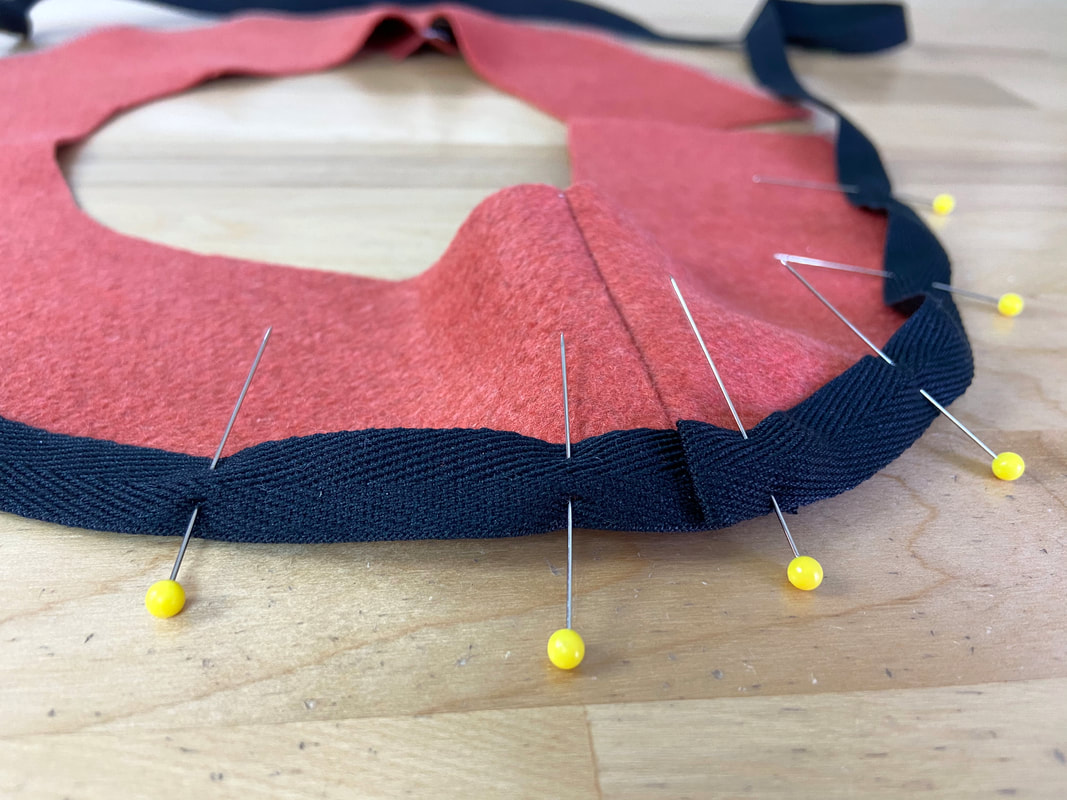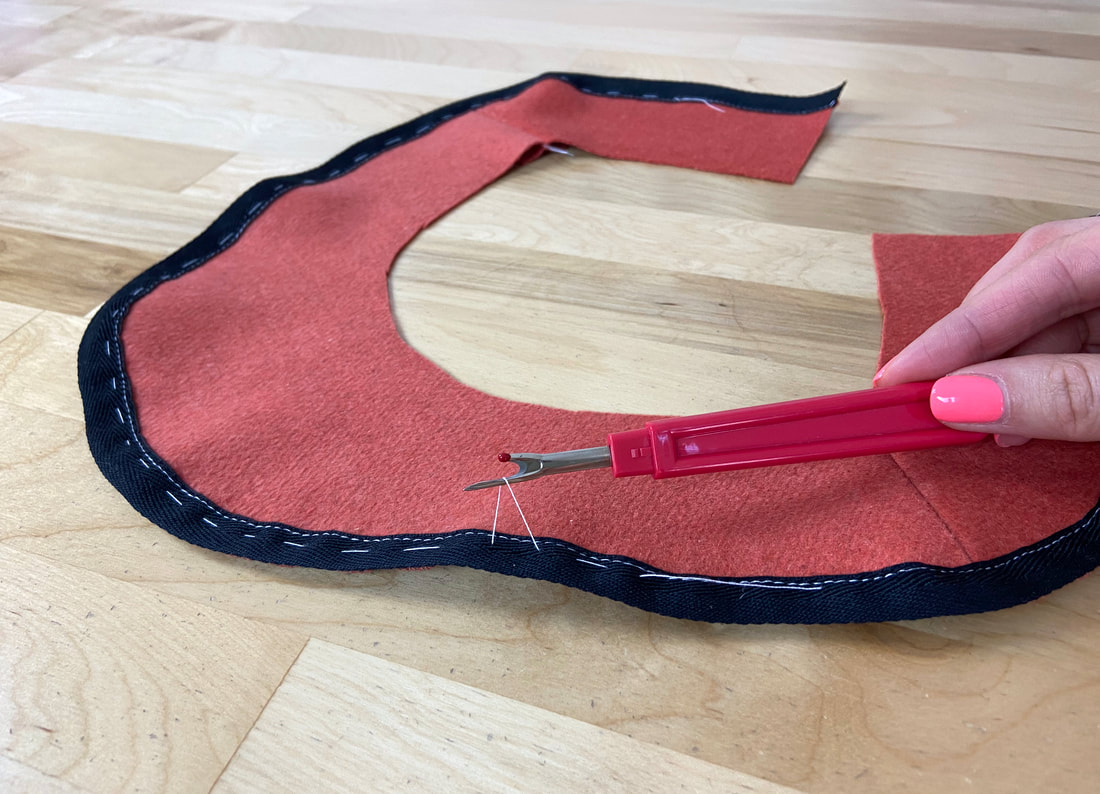Twill tape (or a similar trim) can be applied along a facing edge to enclose it for a decorative, professional finish. Trim or twill tape are used mostly as a decorative masking tool to hide the fabric’s raw edge(s).
When deciding on which trim or twill tape to use, choose one that is durable, non-sheer, and thin enough such that it doesn’t add unnecessary bulk.
1. If your fabric unravels when cut, apply an overedge stitch to the facing's outer edge. You can use either a zigzag or serging stitch (if you own an overlock sewing machine). Once applied, iron the stitched edge to smooth and flatten it.
2. Align the edge of the twill tape to the facing edge at about 1/4” over the serged fabric edge. Place the twill tape on the facing’s right side as shown. Align the end of the twill tape with the open seam edge.
If the facing does not have a seam, place the end of the twill tape a little over one of the facing seams as shown. Insert pins perpendicularly through the twill tape and facing to keep the layers aligned.
3. Continue aligning and pinning the twill tape along the entire facing edge as shown. Trim the excess twill tape when arriving at the other seam edge.
For a closed facing edge: When arriving at the trim’s starting point, align the end at about ¼” over the facing seam, overlapping the start of the trim, and cut the excess off. Fold the end of the trim in such that the folded edge aligns with the facing seam as shown above.
4. At this point, it is extremely helpful to hand baste the twill tape in this alignment prior to stitching.
5. Topstitch along the edge of the trim through the facing layer underneath.
6. Once stitched, remove the hand basting using a seam ripper.
If needed, apply another stitch closer to the facing edge underneath to keep the trim flat and prevent it from flipping up and exposing the facing edge.
7. Last but not least, always iron the final application for a smooth, flat finish.
When to use: The trim/twill tape is another technique used on medium-to-heavy weight open garments with an underside that is sometimes visible from the outside of the garment. This technique can be used with no-fray fabrics (like suede, for example) without the need for any additional serging or special handling.
Trims or twill tape are also a great addition to facing edges that are contained with an overedge stitch (as shown in this tutrial). While an overedge stitch like serging or zigzag does a great job in preventing fabric edges from unraveling, it is not the highest quality finish for open, unlined garments. In this instance, a trim (or twill tape) can be stitched on top of the serged facing edge to hide it and thus provide a cleaner, more professional finish.














